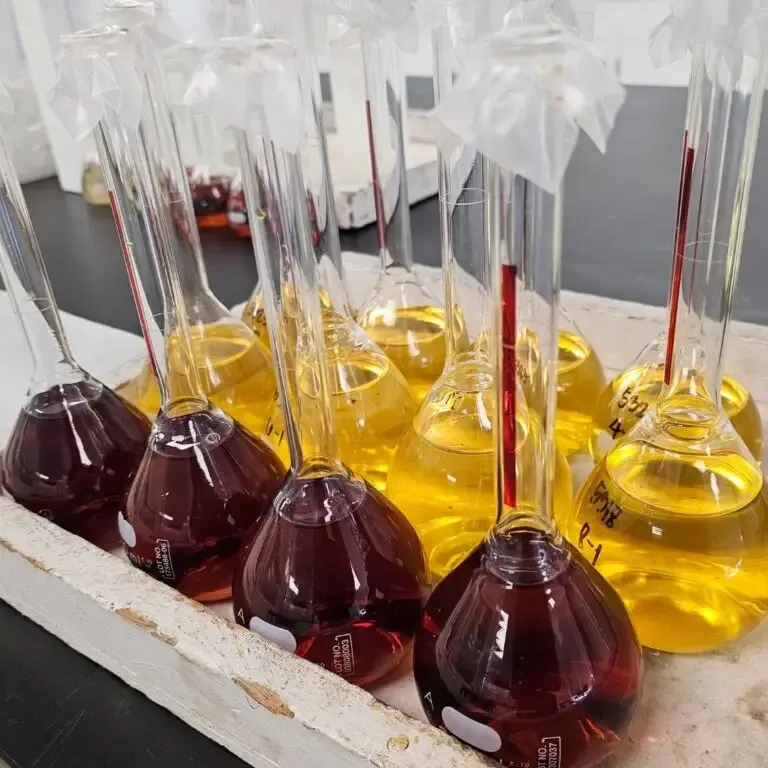Solar Thermal Energy Storage Technology: Principles, Materials, and Practical Applications
Solar thermal energy storage is an innovative way to harness energy from the sun. By storing thermal energy, you can use it when sunlight is not available. This process is essential for enhancing solar power systems and optimizing energy usage.
Solar Thermal Energy Storage Mechanisms
Solar thermal energy storage relies on various mechanisms to store heat. The most common method is sensible heat storage, where materials such as water or sand absorb heat.
Latent heat storage uses phase change materials (PCMs) like paraffin wax. These materials absorb and release energy during their transformation from solid to liquid and vice versa.
Another approach is thermochemical storage, which involves reversible chemical reactions. This method can potentially store large amounts of energy in a compact space. Each mechanism plays a key role in how effectively thermal energy can be stored and used.
Thermal Energy Storage Methods
There are several methods for thermal energy storage. Sensible heat storage involves heating a liquid or solid material, which then holds the heat until it is needed. Common materials include water, rocks, and molten salts.
Latent heat storage uses materials that change phase at specific temperatures. This method provides a high energy density since phase changes can store large amounts of heat.
Thermochemical storage involves reactions that absorb or release heat. While it requires more complex systems, it can store energy for longer periods, making it a promising option for your energy systems.
Role of Solar Energy in Energy Systems
Solar energy is a crucial part of today’s energy systems. It helps reduce reliance on fossil fuels and lowers greenhouse gas emissions. By integrating solar thermal energy storage into these systems, you can enhance energy reliability.
During sunny periods, solar energy is collected and stored for later use. This process ensures that you have heat available even during cloudy days or at night. The combination of solar thermal systems and energy storage is vital for creating sustainable energy solutions for homes, industries, and communities.
Thermal Energy Storage Technologies
Thermal energy storage (TES) includes various technologies that store heat for later use. You can classify these methods into three main types: sensible heat storage, latent heat storage, and thermochemical energy storage. Each has unique characteristics and advantages for managing energy.
Sensible Heat Storage
Sensible heat storage involves heating or cooling a material to store energy. The temperature change in the storage medium allows you to retain heat without changing its phase. Common materials used include water, gravel, and concrete.
Advantages:
- Simple Design: Systems can be straightforward, making them easier to build and maintain.
- Wide Range of Materials: You can use various materials, allowing flexibility based on local resources.
However, the amount of energy stored depends on the material’s specific heat capacity and the temperature difference. More advanced designs include insulated containers to minimize energy loss.
Latent Heat Storage
Latent heat storage uses phase change materials (PCM) to store energy. When these materials absorb or release heat, they change from solid to liquid or liquid to gas. This allows for a larger amount of energy to be stored at a constant temperature.
Benefits:
- Higher Energy Density: You can store more energy in a smaller volume compared to sensible heat systems.
- Stable Temperature: The phase change keeps the temperature steady during the storage process.
Examples of PCMs include paraffin wax and salts, which are commonly used in building materials. Their ability to absorb and release heat makes them useful for balancing energy loads throughout the day.
Thermochemical Energy Storage
Thermochemical energy storage relies on chemical reactions to store and release energy. During the reaction, heat is absorbed or released, allowing efficient energy management. This method uses various chemicals, like metal oxides and salts.
Key Features:
- Long-Term Storage: You can store energy for longer periods without significant losses.
- High Efficiency: These systems can achieve higher efficiency rates compared to other storage methods.
Thermochemical processes often involve two or more steps, requiring careful design to manage the reaction cycles effectively. This technology is promising for future energy systems, especially in remote areas.
Materials for Solar Thermal Energy Storage
When considering materials for solar thermal energy storage, it’s crucial to focus on their thermal properties, efficiency, and suitability for different applications. Below, you will find important materials commonly used in this technology.
Phase Change Materials
Phase Change Materials (PCMs) store and release energy during phase changes, mainly from solid to liquid, maintaining consistent temperatures.
Common examples include paraffin wax and salt hydrates, which operate effectively at specific melting points. PCMs boost energy efficiency by storing excess heat and enhancing solar energy systems.
Nitrate Salts
Nitrate salts, like sodium and potassium nitrate, are used in solar thermal storage due to their thermal stability and energy density, operating up to 550°C.
They absorb heat when molten and release it when solidified, making them ideal for CSP plants in efficient two-tank systems.
Organic Materials
Organic materials, like bio-based substances and organic PCMs, are cost-effective and environmentally friendly alternatives for energy storage.
They can be customized for specific needs and include examples like fatty acids and sugars, which absorb and release heat, despite having lower thermal conductivity.
Material Selection Criteria
When selecting materials for thermal energy storage, consider several key factors.
- Thermal properties: Look for materials that have high heat capacity and optimal melting points.
- Cost-effectiveness: Evaluate both the initial and long-term costs of storage materials.
- Stability: Ensure the material can withstand repeated heating and cooling cycles.
- Environmental impact: Opt for materials that are sustainable and have minimal environmental effects.
Considering these criteria will help you choose the best materials for your solar thermal energy storage systems. Making informed decisions can enhance efficiency and sustainability in harnessing solar energy.
Applications and Integration in Energy Systems
Solar thermal energy storage technology plays a vital role in various applications. Its integration into energy systems enhances efficiency and sustainability in different sectors. Below are some key applications.
Concentrated Solar Power (CSP) Systems
CSP systems use mirrors or lenses to focus sunlight onto a small area, generating heat. This heat can then be stored and converted into electricity using steam turbines. You will find that CSP technology is particularly efficient for large-scale energy production.
- Storage Capability: CSP systems can store thermal energy, allowing for electricity generation even when the sun isn’t shining.
- System Integration: Integrating CSP with conventional power plants enhances reliability and makes it easier to meet energy demands.
CSP offers significant potential for clean energy generation, making it a favorite in many renewable energy projects.
Solar Thermal Power Plants
Solar thermal power plants harness solar energy for electricity. These plants utilize large mirrors to concentrate sunlight, which heats a fluid to produce steam.
- Heat Utilization: The produced steam drives turbines that generate electricity.
- Dynamic Operations: By using thermal energy storage, these plants can operate during cloudy periods or at night.
Incorporating this technology into the energy mix can greatly reduce reliance on fossil fuels while providing consistent energy output.
Industrial Applications
Solar thermal technology has diverse applications in industry, particularly for process heat. Many industries utilize thermal energy for tasks like heating, drying, and curing.
- Process Heat: Solar systems can provide hot water or steam for manufacturing processes, reducing gas and electricity costs.
- Waste Heat Recovery: Integrating thermal storage allows industries to capture waste heat, improving overall energy efficiency and sustainability.
By utilizing solar thermal energy, industries can lower their carbon footprint and contribute to a greener planet.
Embracing these technologies can lead to significant savings and environmental benefits across different sectors.
Performance and Efficiency Factors
When looking at solar thermal energy storage technology, several key factors influence performance and efficiency. These include energy storage capacity, heat transfer characteristics, and how performance is assessed in real-world applications.
Energy Storage Capacity
Energy storage capacity is crucial for determining how much thermal energy a system can hold. This capacity depends on the materials used and the design of the storage system.
Key factors affecting energy storage capacity include:
- Material Density: High-density materials can store more energy in a smaller volume.
- Specific Heat: Materials with high specific heat can absorb and retain more heat without significant temperature changes.
- Volume of Storage Medium: Larger volumes allow for greater energy capture.
By optimizing these factors, you can enhance the energy capacity, making the system more effective in meeting energy needs.
Heat Transfer and Operational Characteristics
Heat transfer plays a vital role in how efficiently energy is stored and retrieved. Effective heat transfer ensures that energy moves quickly and efficiently between the collector and the storage medium.
Important aspects to consider are:
- Thermal Conductivity: Materials with high thermal conductivity promote better heat movement.
- Heat Transfer Fluids: The choice of fluids, such as water or oil, affects how well heat is transferred between components.
- Temperature Gradients: Smaller gradients lead to less energy loss during transfer.
Improving heat transfer contributes to smoother operations and better energy output when needed.
Performance Assessments
Performance assessments help you understand how well a solar thermal storage system functions. Evaluation methods often include numerical simulations and field tests to gauge efficiency.
Common performance assessment methods include:
- Efficiency Measurements: These measure how much stored energy can be retrieved versus how much was input.
- Heat Loss Analysis: Identifying and minimizing heat losses ensures greater overall efficiency.
- Real-time Monitoring: Continuous monitoring provides insights into performance and areas for improvement.
Regular assessments can help you optimize the system and ensure it meets energy demands effectively.
also read: How to Customize Your Jeep with a Jeep Dealer in Sacramento







